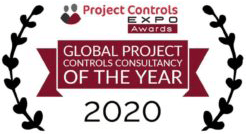Project Controls is the process by which a project is monitored and controlled to ensure the successful delivery of the project.
This is achieved via analysis and management of what is known as the ‘Triple Constraints’ and more descriptively: Scope, Schedule, and Cost.
As technology is ever-changing and evolving, many project professionals are exposed to a diverse range of project tools, each bearing a unique feature or efficiency over others within the technological landscape.
The output of project control tools is often integrated and summarised in a report, for project managers and directors to make strategic decisions. These reports are often time-consuming to compose and lengthy to read.
Additionally, in many instances the information contained within these reports is often shaped by the narrative and context of each project discipline, this is where data from the source can become unreliable.
Project Control Disciplines:
Within project controls, several disciplines are involved to establish valid, accurate and reliable reporting. These disciplines are as follows:
- Estimating – Professionals that assist with estimating the level of effort or quantities required are known as “Take-offs” when estimating durations, and “Bill of Quantities” when estimating cost and resources.
- Planning and Scheduling – Professionals that create and maintain project schedules. To assist with the monitoring and controlling of a project’s progress.
- Commercial and Cost – Professionals such as retail administrators and managers, cost controllers and managers, that establish and manage the contract’s principal and contractor-related claims and manage the project’s budget and expenditure.
- Risk – Professionals that identify, assess, manage, and monitor risks.
Collectively these disciplines aim to deliver projects as per their agreed scope and minimise cost overruns and delays.
It’s ultimately the duty of project controls professionals to support the decision-making process made by project managers as part of the project management office.
The larger the scale of the portfolio of projects managed by an organisation, the greater the difficulty in maintaining accurate project reporting.
Digital Reporting Application of Project Controls:
Digital Reporting is the latest buzzword of the decade, but what does it mean?
Consider the following, when was the last time you purchased a newspaper to read the news? Most people watch the news on TV or read it on their smartphones.
So why should project organisations be any different and rely on tedious, lengthy reports to arrive at a decision?
Thankfully, technology has evolved to allow for the integration of project controls with digital reporting. It aims to visualise data, which otherwise would be captured as pages of reports no different to a newspaper.
The benefit of data visualisation is it visually represents large data sets making it easier to interpret and understand directly from the source, ensuring the user understands the data in the right context.
Data visualisation is all about enabling data to speak for itself, minimising the risk of misinterpretation and ultimately supporting the decision maker to make an evidence-based decision.
The Added Value of Integrating Project Controls with Digital Reporting:
Integrating project control reports with “Digital Reporting” yields the following added value for your organisation:
- Accessibility: In today’s world, data has become more omnipresent than ever. Meaning you’re no longer confined to the parameters of your office to review a report, you can access data on your phone while waiting for your morning coffee.
- Variety: Digital reports can handle a wide range of data including structured data such as databases, P6 for planners and Unifier for cost control, semi-structured data such as Excel-based registers and unstructured data such as Site survey photographs. Collectively they can aggregate data to allow the user to filter for the information they require.
- Analytics: By aggregating data from various project control tool databases, digital reports can draw on correlations between data sets. This allows the user to study trends and manage project risks and their dependencies on project cost and schedule promptly.
An example of this is the scenario of COVID disruptions, a project manager could utilise a digital report that aggregates data from risk management tools such as ARM, a cost management tool such as SAP and a scheduling tool such as P6. The report could be configured to allow the user to study infection trends on-site and their impact on scheduled activities as well as cost centres impacted in SAP.
Other standard reports that can be integrated into digital reports include but are not limited to:
- Project Status Reports
- Earned Value Management
- Critical Path Diagrams
- Timelines and Backlogs
Summary:
Data visualisation through the integration of project controls and digital reporting is a substantial enhancement to project organisations. This is because it can integrate multiple large sets of data and create easy-to-understand visualisations of the data for stakeholders.
Thus, allowing for more effective communication between stakeholders and decreasing the response time for project managers and directors to make informed decisions.
If you would like more information on digital reporting, get in touch!
You can email us at info@logikalprojects.com
Or call on +61 1300 564 452 (APAC) or +44 (0)20 7404 4826 (UK & Europe)
Or you can use the Contact Us form here.





